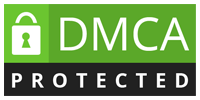Most people have experienced at least once or twice that their computer is showing unlikely behavior.
It can be that it is slowing down or having too many pop-up advertisements of any kind. If indeed your computer is misbehaving and shows these signs, you can safely expect that it has been infected by malware.
Slowing down and unusual behavior are the first visible signs that malware has infected your computer system. Although this type of threat is common, it is still important that users should be aware of the risks.
Since the creation of modern technology, people have become dependent on the use of computers, applications, and the internet. There is an estimate of almost 5 billion internet users around the world.
Unfortunately, not all of them are aware or well informed about basic use and security. With this, many malicious hackers have taken the advantage of spreading malware by infecting web applications.
In this topic, we will be learning about internet safety and precautions from malware threats.
Malware
Malware is malicious programs in computers or applications that are created to steal information or destroy computer devices. They are in the form of computer viruses, worms, rootkits, keyloggers, ransomware, and trojan horses.
Detecting Infected System
Malware is a security risk that should not be taken lightly. A single incident can cause a complete stop to your system process and operations or worst destroy your device.
Here are the things you need to watch out for if malware hits your computer or device.
Your unit should experience a lockout, cannot uninstall untrusted applications, random messages sent from your account, your security software suddenly shuts down, your browser changes from time to time without authorization, applications start to crash, your device process slows down, and random notifications that you are connected to the internet.
It is advisable to understand that once these symptoms show, there is no quick solution to the problem.
Experts and organizations have continued to research and update security softwares just to be ahead of these new threats. It would be to our advantage to study and keep track of these updated threats.
Web-Based Malware
These types of malware attacks happen when you download or install unsecured files from a website. This can be done through social engineering or drive-by malware.
Social engineering is a hacking technique that uses psychological tricks to users in giving away their information.
Drive-by malware is a hacking technique on a large scale. This is where hackers create infected websites.
Malvertising
Malvertising is a hybrid attack technique done by hackers through infecting legitimate websites. Doing this, users will have to be aware of every executed click, this mostly happens when you click a link and you are redirected to a different website.
Process of Malware Detection
Detection can be done through the process of virtual machine-based detection and signature-based detection.
Virtual machines will mimic a user’s activity while observing the movement of any unauthorized files. Once detected the software will halt the operation, trace the source, and delete it.
Signature-based detection is done by ethical hackers as they learn malware patterns. Once identified the malware activity and pattern, algorithms will deny the malware access.
Career Opportunity
Keep yourself, work, and business safe from external harmful elements that can damage your assets. Learn cybersecurity with Reliable Cyber Solutions, LLC., one of the most trusted firms that offer services, courses, and certifications. Visit our website now at RCyberSolutions.










